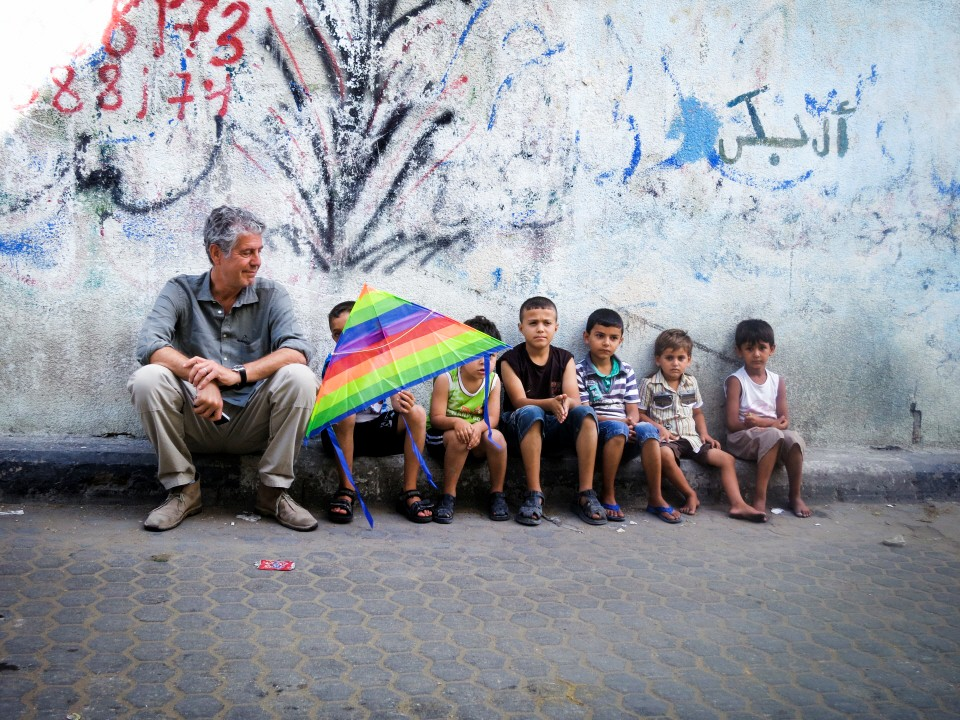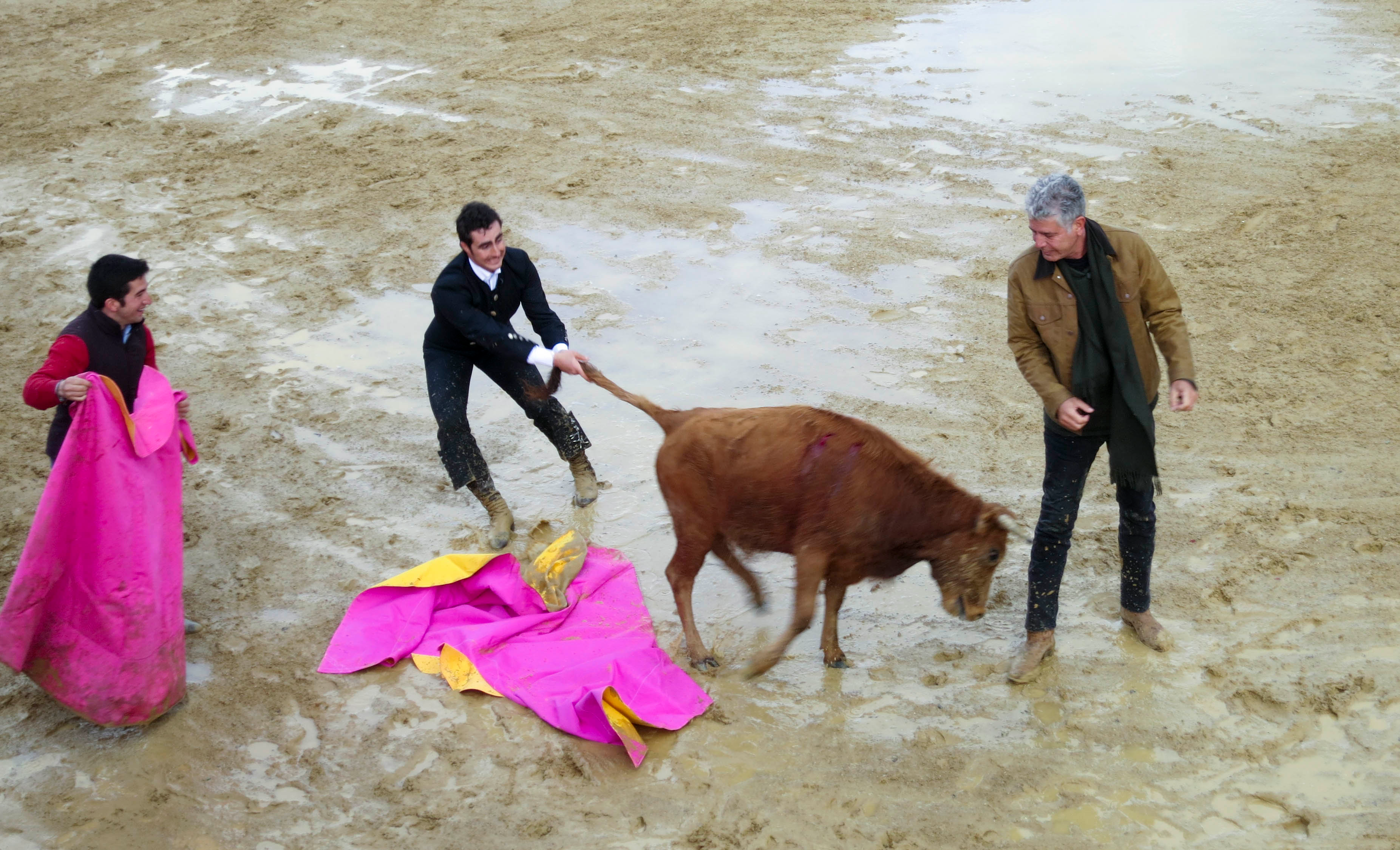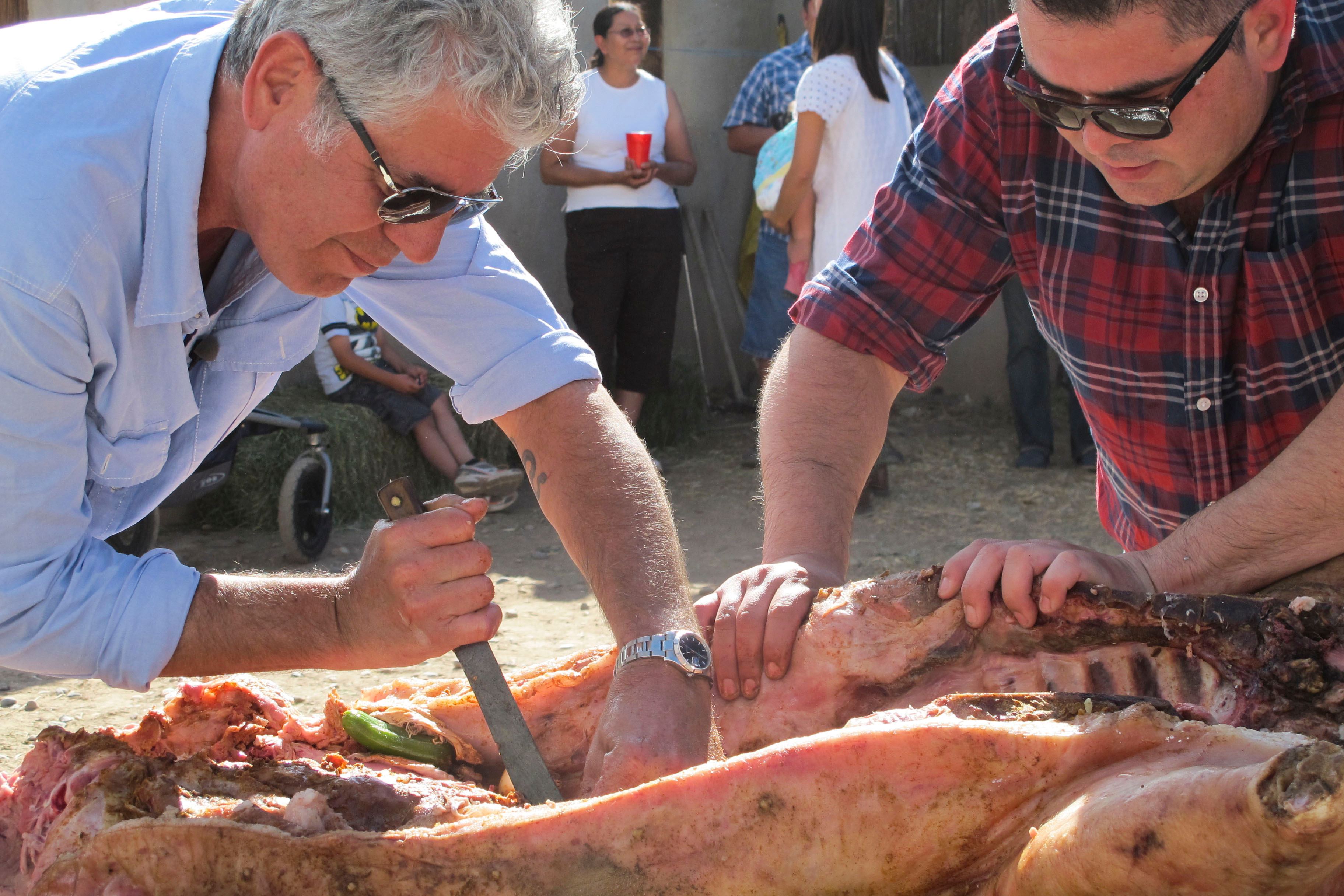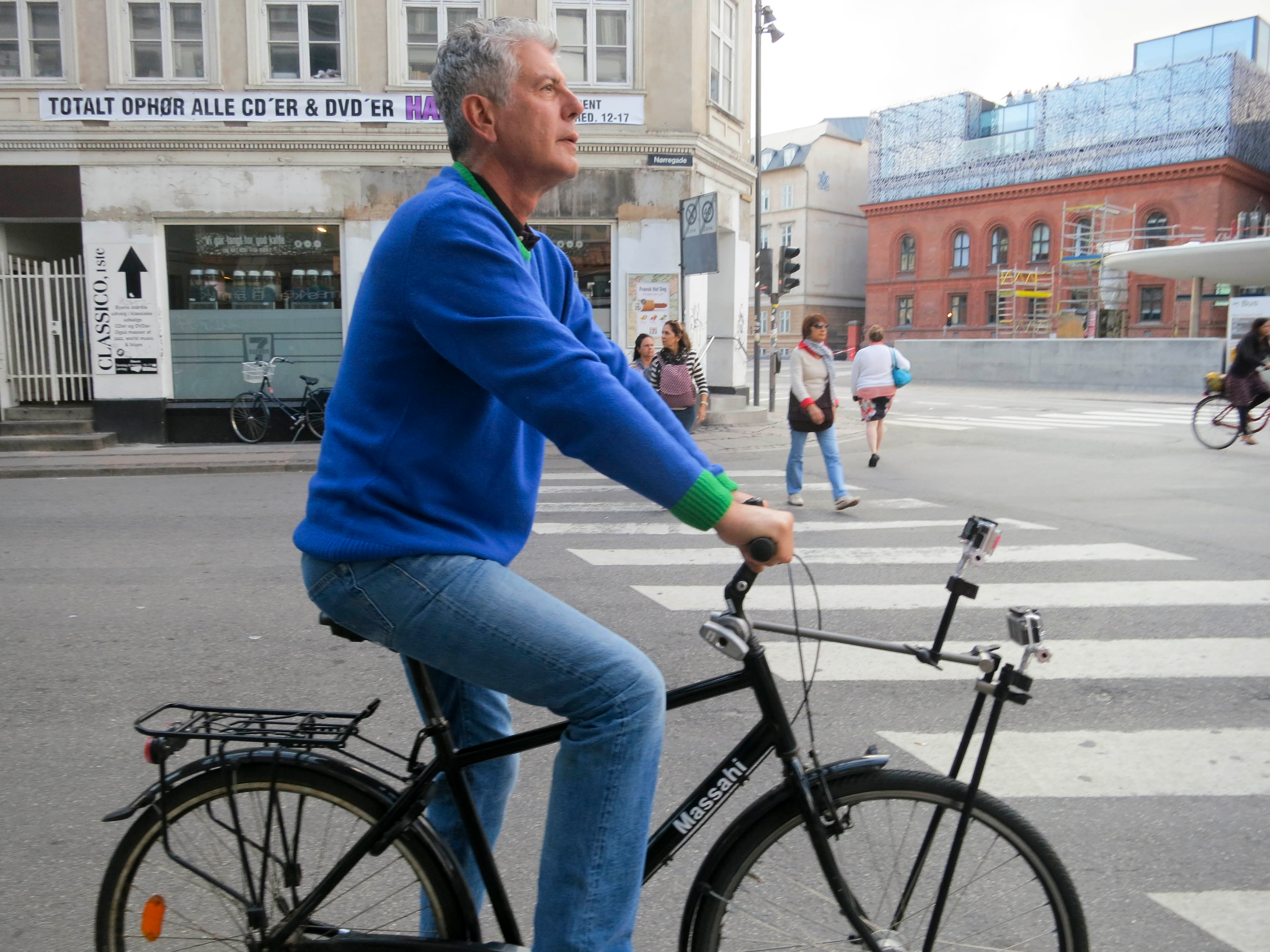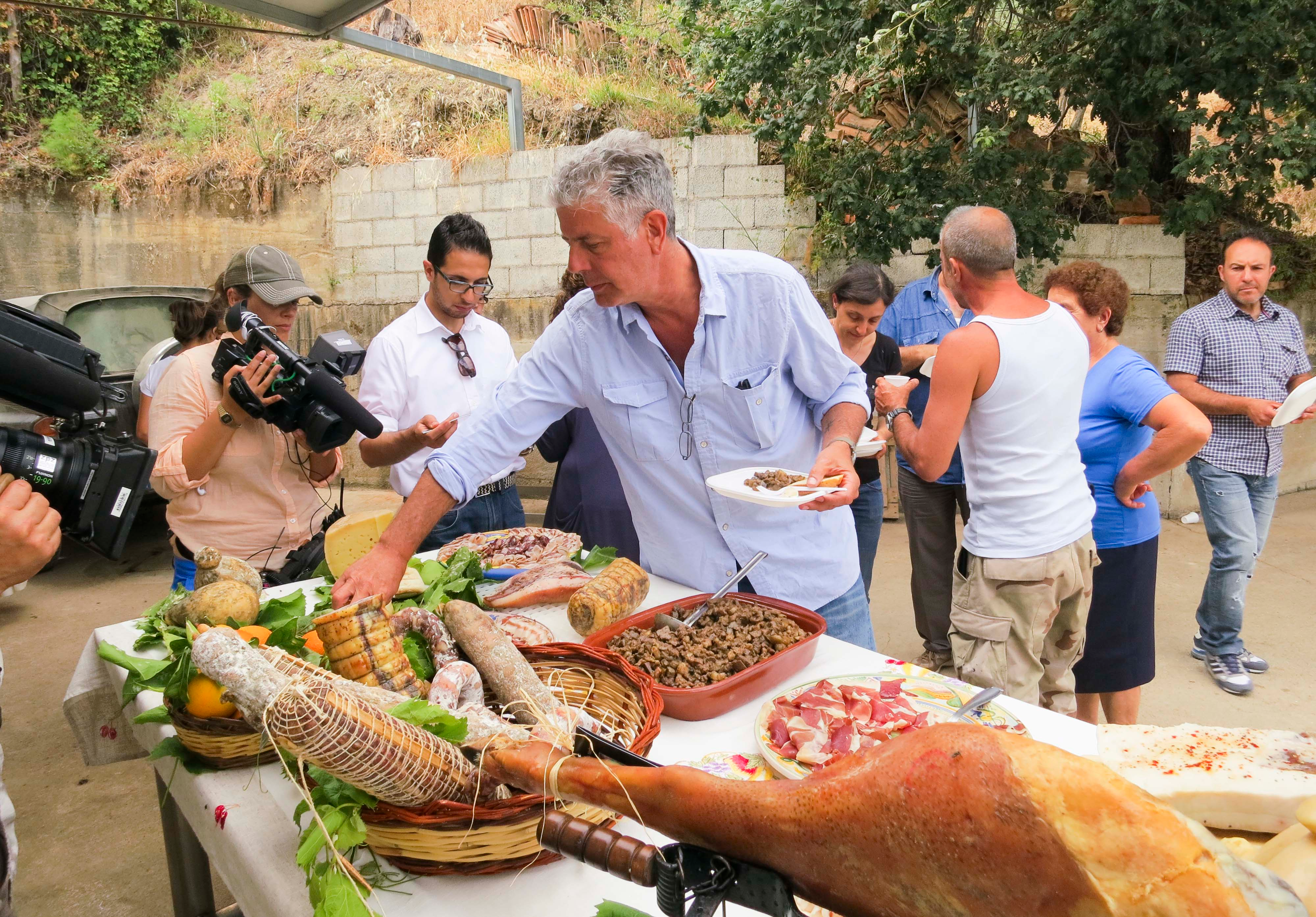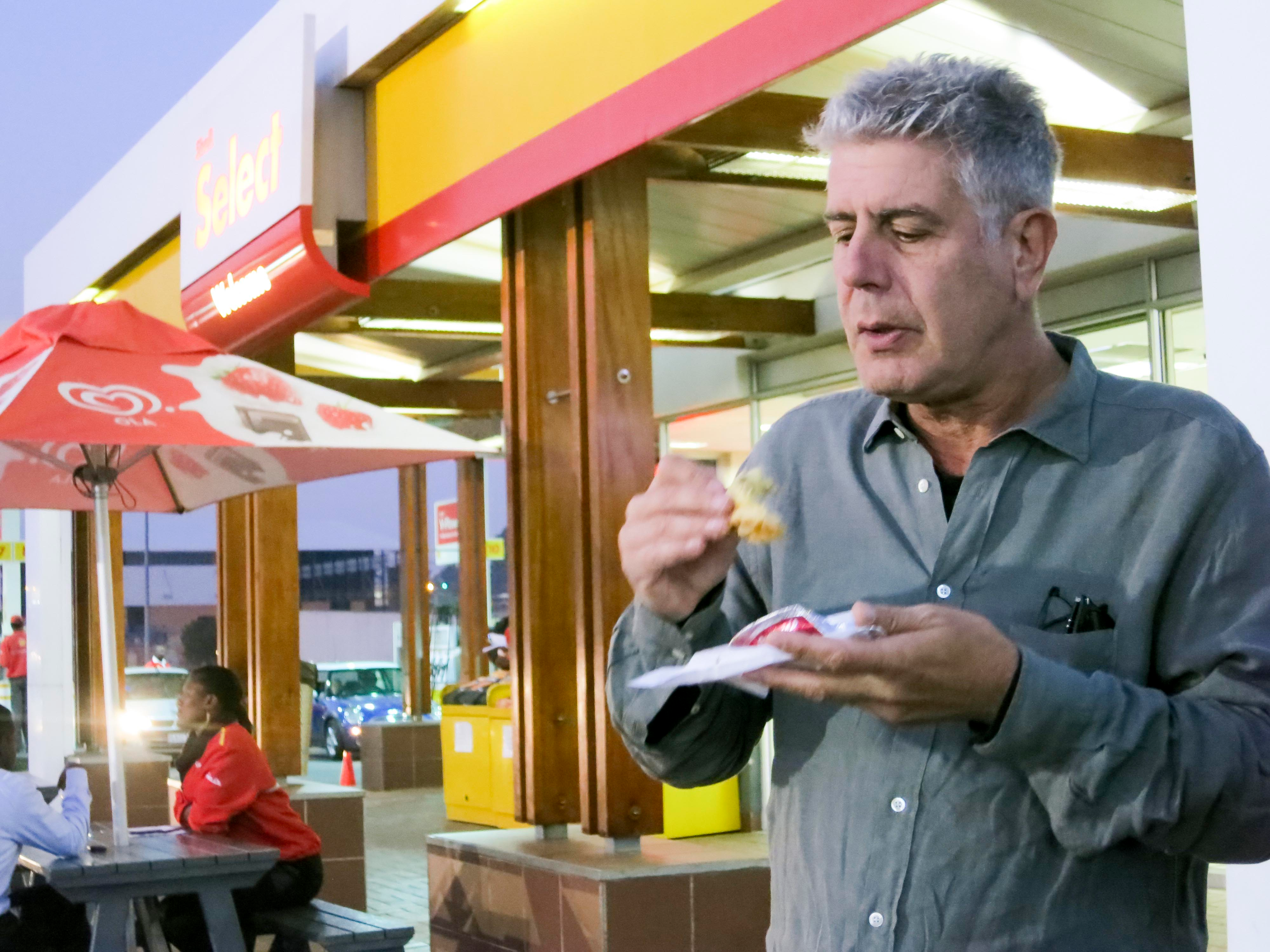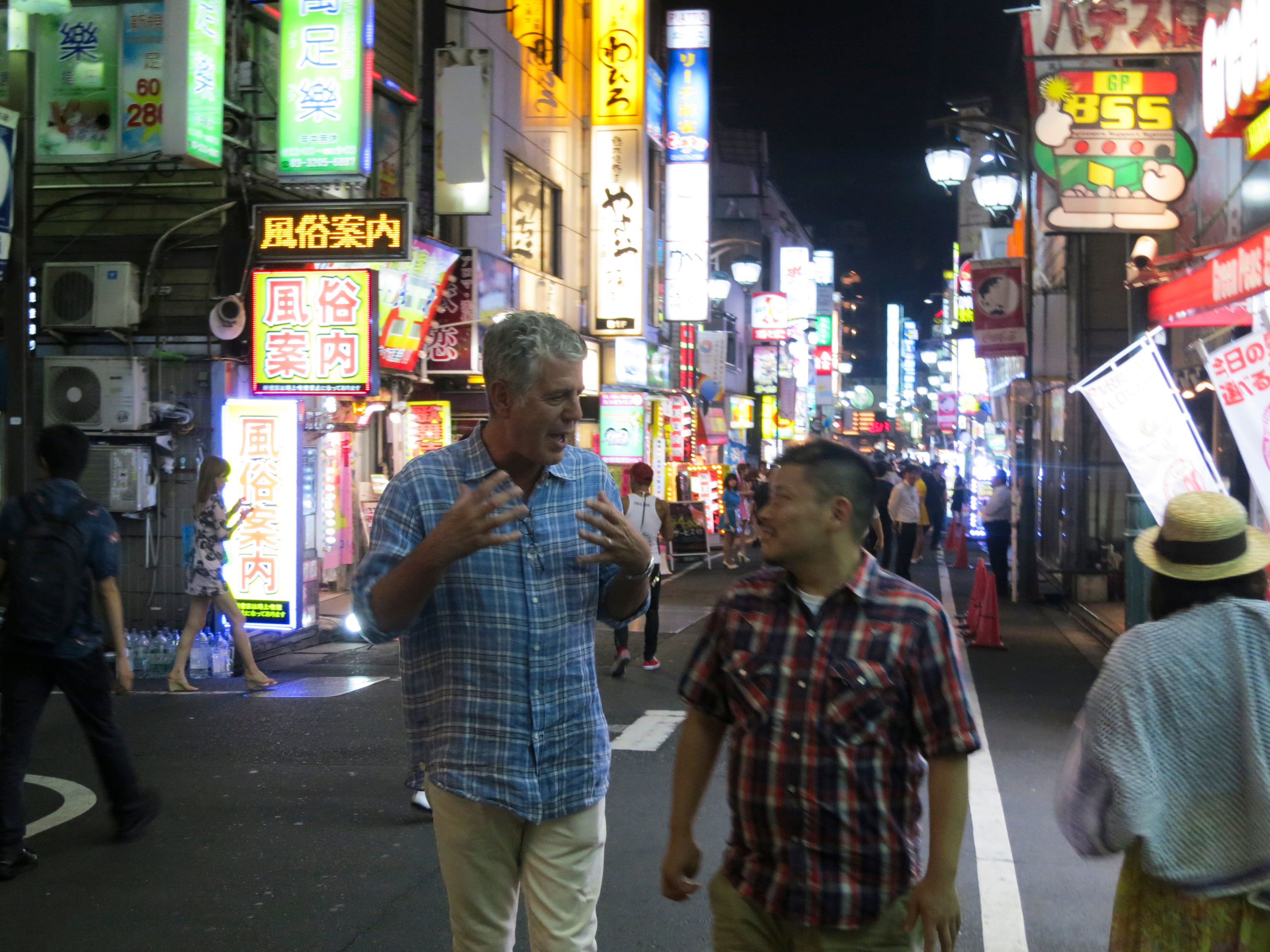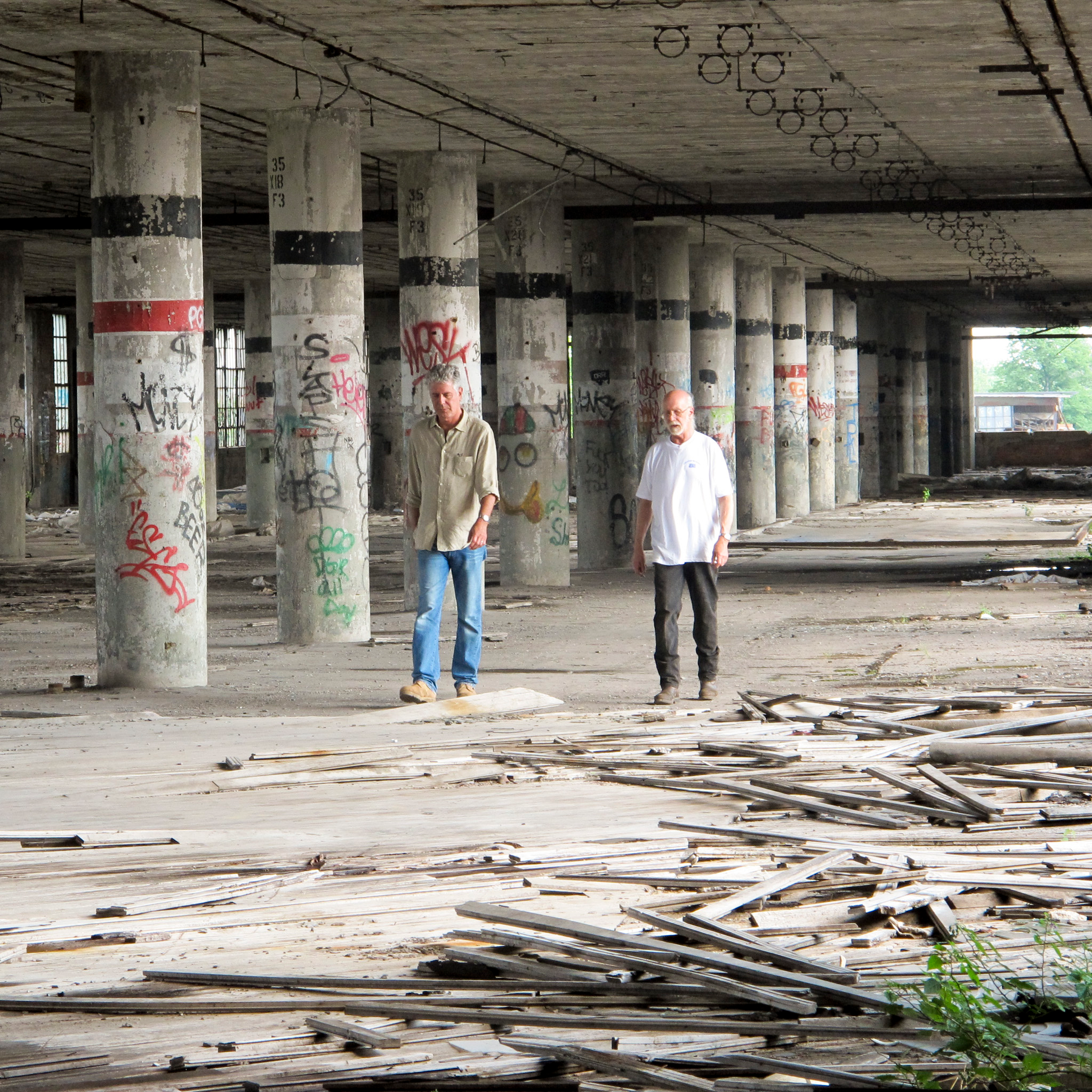Parts Unknown, Season 2: I Know Dead Octopus When I See One
This season begins with a trip to Jerusalem, Bourdain speaking with Israelis and Palestinians about their hopes, fears, losses, and the wall—or fence, depending on who's talking. This season ends with a wide-eyed trip into a Tokyo red-light district. On one end, peace in the Middle East. On the other, tentacle porn. Now that, dear reader, is range.
Episode 1: Jerusalem
The itinerary: One of Bourdain's favorite episodes of the series (as of 2016) sees him travel, for the first time, to what he calls "the most contentious piece of real estate in the world." It's a bit hard to classify the tone of "Jerusalem." To call it tentative implies there's a layer of timidity, when there is not. To say it's guarded denies its honesty. It does not pull punches, but there's also little of the boldness Parts Unknown often displays. Perhaps that's not accurate. To be there at all is bold, to ask questions is bolder. But what's perhaps boldest is how conventional this episode seems. After the bracing introduction, Bourdain and company approach "Jerusalem," for the most part, as though it's just another day at the office, eating meals, hearing stories, asking questions. It's just the nature of the questions, and the answers, that's different.
Abed Abusrour, founder of the child-centered Al Rowwad Cultural and Theater Training Center in the Aida refugee camp in Bethlehem, Palestine, tells Bourdain that theater is "one of the most amazing, powerful, civilized, and non-violent means to express yourself, to tell your story, to be truthful." Perhaps he saw a similar power in going to a place, bringing a camera, sitting down at a table, and listening.
Looks delicious: When the show visits Majda, a restaurant jointly owned by married couple Michal Baranes (Jewish) and Yaakov Barhum (Muslim), they find that's a riot of color and, if Bourdain's happy sounds are to believed, of flavor. It's so good that Bourdain almost misses that the entire thing is vegetarian. Almost.
Episode 2: Spain
The itinerary: Anyone can point a camera at what's unfamiliar. Go somewhere many have never been to see something that will be foreign to those back home, hit the right button, and you're good to go. What Parts Unknown does so well is look at the unfamiliar within the unfamiliar. We see bullfighting, captured on camera with an intensity of focus typically reserved for NFL Films; it makes both the grace, the skill, and the capacity of the body apparent. The processions of holy week aren't just glimpsed up close, instead, the camera shows us the people who have carefully rehearsed the precise movement required to bear a float weighing thousands of pounds on their backs, crawling just to get it through the door. Much is memorable about this episode. True tapas culture, a wonderland of free food you get just for drinking. Music, dance, blue skies, family dinners, young love. But the precision of a step back, the glimpse of bodies moving in perfect unison beneath a glittering burden, that's the kind of thing not just anyone would take the time to capture.
Looks delicious: The endless tapas may be enviable, but Bourdain's friend (and Parts Unknown cinematographer) Zach Zamboni had to learn to properly slice the Easter jamon before he was permitted to propose to his Spanish fiancée. It's a sight to see.
Episode 3: New Mexico
The itinerary: First: tacos. Next: guns. Bourdain will revisit, throughout the series, the conversation surrounding American gun culture, always acknowledging the primal charge that many, Bourdain included, get from holding those "iconic shapes" in their hands and squeezing. Bang: A can of Tecate explodes, spinning madly and pinwheeling beer through the air like a small, somersaulting geyser. Its placement in the episode does not seem, to this writer, to be accidental. It's there to accustom the viewer to the notion that the progressive, outspoken Bourdain could like firing guns, and could be an excellent shot in fact. He's a city slicker, but he sure blends in fast. From there, he meanders through Georgia O'Keefe country, stirring up cubes of beef in cast-iron over a campfire in the shadow of desert stone pinnacles, and cracking dark, dark jokes about The Bomb. It's not all cowboy stuff, though he does have the boots, but that sense of freedom and wildness breezes through the episode like a tumbling tumbleweed.
Looks delicious: Bourdain's told that the New Mexico state question is "red or green," as in red or green chiles. The episode makes more of those nuclear jokes after he samples some of the green. It's rare to see something so spicy that Bourdain can't take it.
Programming note: Sometimes Bourdain's field notes add greatly to the experience of the episode, once you've seen it. This is one of those times, as Bourdain directly addresses the decision to wield a gun in the episode.
Episode 4: Copenhagen
The itinerary: What happens after you're "the best restaurant in the world"? That's what Parts Unknown asks in this episode, the title of which, Bourdain tells us early on, is misleading. This is not about Copenhagen, it's about Noma, and Noma only. Noma in one meal. Chef René Redzepi, "the most famous Dane since Hamlet," has made foraging a fundamental aspect of his restaurant, and Parts Unknown takes the spirit of creative thinking, unexpected usefulness, and new perspectives and applies it to the filmmaking of this visually bewitching, dreamlike piece of television.
Looks delicious: Is this a trick question?
> Read more about "Copenhagen" in our list of Parts Unknown's most essential episodes.
Episode 5: Sicily
The itinerary: Greetings, and welcome to your favorite travel program. This trip to Italy is sponsored by artifice, honesty, failure, anger, the mafia, and what it's like to know a dead octopus when you see one. This is an episode of Parts Unknown that is totally unsuccessful in its aims. It is also one of the greats.
Looks delicious: Bourdain eats (and doesn't even sort of remember) a gorgeous-looking meal that's tainted by both the charade and Bourdain's afternoon off-camera, furiously drinking Negronis. Luckily, he also later eats some spaghetti in cuttlefish ink, as well as some chickpea fritters. That's better.
> Read more about "Sicily" in our list of Parts Unknown's most essential episodes.
Episode 6: South Africa
The itinerary: "I arrived in this country spectacularly ignorant. I will leave spectacularly ignorant," Bourdain tells us of his trip to South Africa, which he visited not long before the death of the then-critically-ill Nelson Mandela. The people he meets have no interest in what one young musician describes as a "coffee table idea"—that a vote can somehow end racism. What Bourdain finds is that people are sharply aware of what it took to get the country to the place it is today. History is keenly felt, not ignored. Many Parts Unknown episodes are about the ghosts of the past, and how they might shape the future. Many are about the growing pains that come with transition and change. And not many, but some—nearly all particularly thought-provoking—are about not just a specific place, but a specific time in that place. A destination and a moment at that destination. "South Africa" is all those episodes in one.
Looks delicious: A meal at Maders—a butchery and palace of grilled meat in Pretoria—is particularly memorable for reasons that have nothing to do with the food (though the food is memorable in itself, too).
Episode 7: Tokyo
The itinerary: When is Tokyo a place unknown? When you see it like this. Another of Parts Unknown's visually playful episodes sees a jet-lagged, uncertain Bourdain head into the night and Tokyo's sex district (though it's "more a field of dreams than the actual act of sex") and into the land of tiny, distinctive micro bars. He sees a show he says is better than Hendrix, Joplin, Bowie, and a storied Broadway production of A Moon For The Misbegotten, full of robots and lights and battles and bikinis, supported, apparently, by the Yakuza. One of the great first acts of the series sees Bourdain monologue about life before visiting Tokyo, and life after. He steps into an elevator weary, uncertain, and emerges like Alice into Wonderland. Even a quiet sushi meal sits atop a frisson of nervous excitement. It's thrilling, strange, and definitely adult. Don't bring "Tokyo" for show and tell.
Looks delicious: That beautiful meal comes after a brilliantly edited sequence that sees legendary sushi chef Naomichi Yasuda shot like a world-class martial artist, moving deftly and with decision. The food looks incredible, but the scene itself is even better.
Episode 8: Detroit
The itinerary: Like "Jerusalem" this season, like "West Virginia" and "Iran" later, the way one talks about and captures Detroit is inherently political, because of where it is, what it means, who lives there, how it's been discussed. What does it mean to film "ruin porn," to linger on the exquisitely beautiful wreckage of factories and the uncanny emptiness of abandoned skyscrapers, to "[sift] through the remains of Detroit's great ongoing American tragedy"? Bourdain compares these buildings to Angkor Wat and the ruins of Rome. Please forgive the lofty language here—it's the way Bourdain speaks about Detroit, and as a native Michigander who spent many summers in the city, this writer finds it difficult to resist. If that's all it was, Bourdain would have failed to capture Detroit, but instead he folds it all in, the tragedy and the life. Jukeboxes and coney dogs. His fascination and wonder for the city are obvious; so is his desire to get it right. Mostly, he does—but a Detroiter might say otherwise.
Looks delicious: Coney dogs—the meat slurry, mustard, raw onions-topped hot dogs—are a wondrously messy culinary adventure. Bourdain has two, at least.
